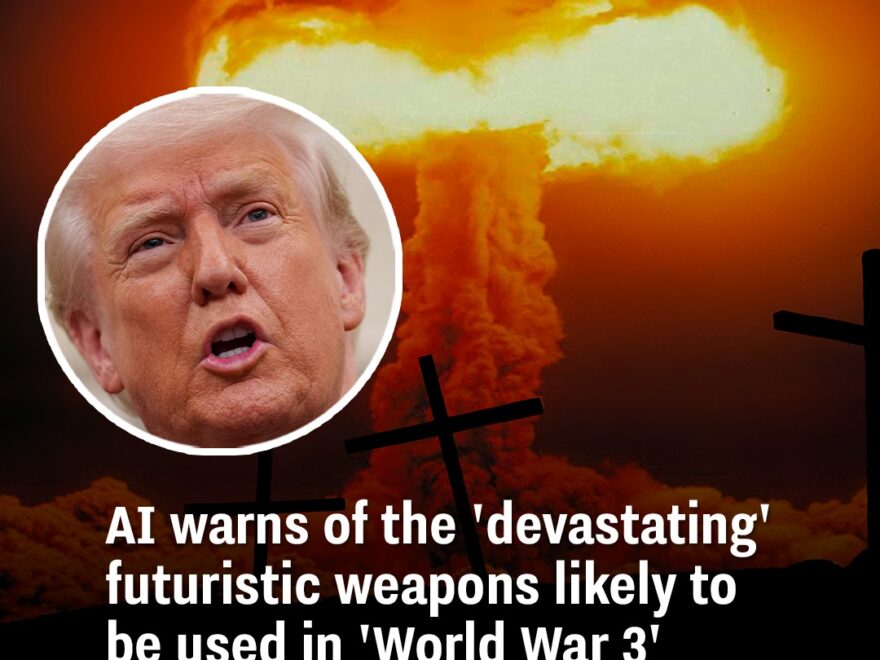AI has become a useful tool in our daily lives, helping with everything from planning schedules to generating creative ideas – perhaps replacing us in some aspects.
But it’s also capable of predicting some terrifying possibilities like what weapons might be used in a future World War 3.
With the current state of world politics, President Trump’s admittance that we’re on the cusp of WW3 and the Doomsday clock striking ever so close to midnight, it’s hard not to wonder: what would a modern world war actually look like?
According to OpenAI’s ChatGPT, ‘the weapons used would likely be far more advanced and destructive than those of any previous conflict.’
Here’s a breakdown of the most devastating weapons that could be used in World War 3.
Nuclear Weapons
By far the most catastrophic, nuclear weapons like Intercontinental Ballistic Missiles (ICBMs) can cause immediate destruction and environmental collapse. Modern thermonuclear bombs are thousands of times more powerful than those dropped on Hiroshima and Nagasaki, meaning entire cities could be wiped out in seconds. But the fallout would be just as catastrophic, including long-lasting radiation, and a nuclear winter.
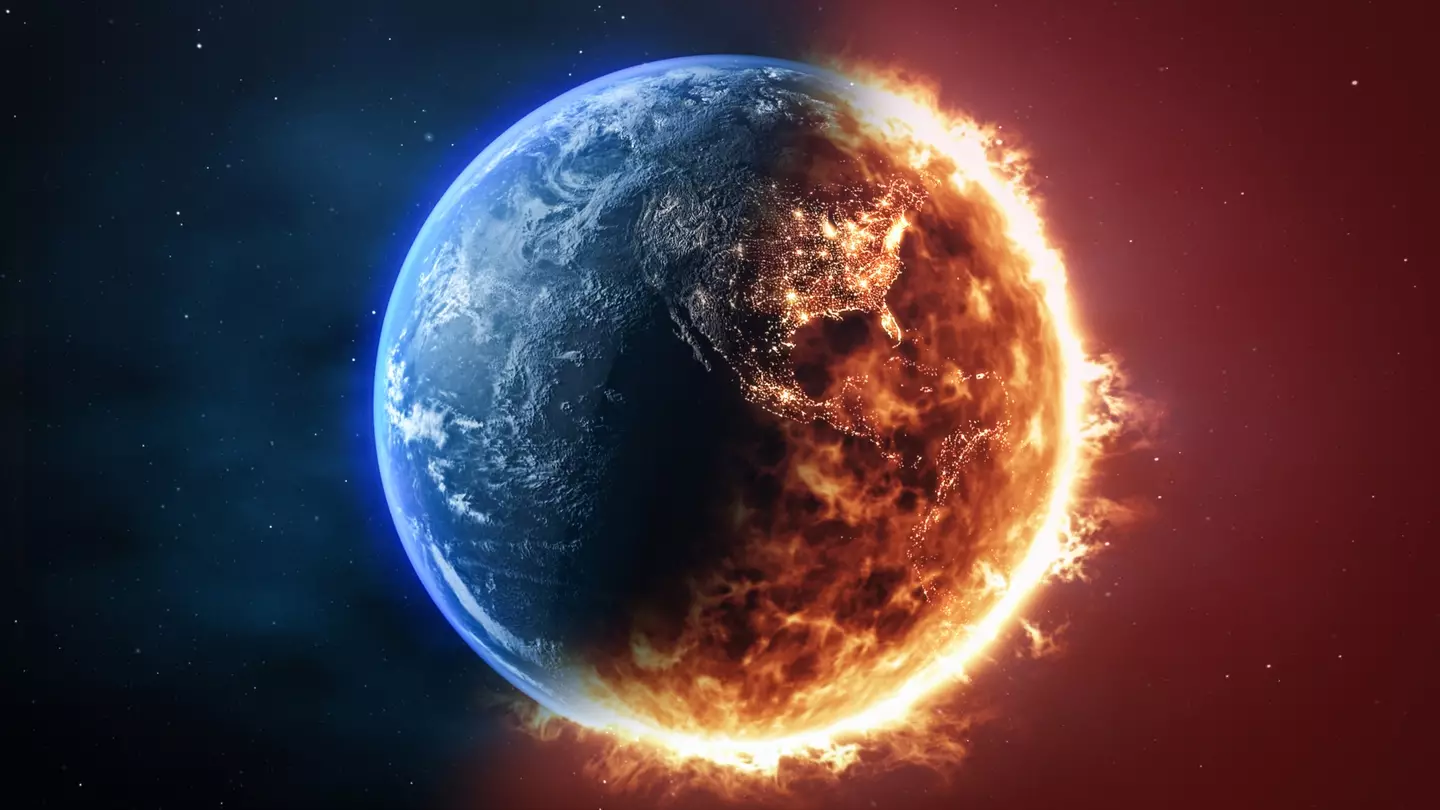

AI can predict what weapons might be used in a future World War 3. DrPixel / Getty
Biological Weapons
Advancements in biotechnology have made biological warfare even more terrifying. These weapons use lab-modified pathogens to target specific populations, causing disease, pandemics and death. Biological weapons wouldn’t just take lives however, they could overwhelm and cripple healthcare systems.
Chemical Weapons
Toxic substances like VX gas or Novichok nerve agents can paralyse and kill thousands with a drop. Even small-scale use of chemical weapons could cause mass panic and overwhelming casualties.
Cyber Weapons
Cyber attacks can target a nation’s infrastructure, like financial systems and water supplies without a single bullet being fired.
High-altitude nuclear detonations or Electromagnetic Pulse (EMP) attacks could wipe out power grids, shut down communications, and disable military defences. As many countries rely on technology, taking this away could isolate and ultimately destroy them.
Directed Energy Weapons (DEWs)
Lasers and microwave weapons might sound too sci-fi for a World War, but they could very well play a part, according to AI.
These use focused energy to damage targets and disable things like electronics, vehicles, drones and aircraft with pinpoint precision. Microwave Weapons can also target people which can result in disrupted brain function and severe pain for the victims.
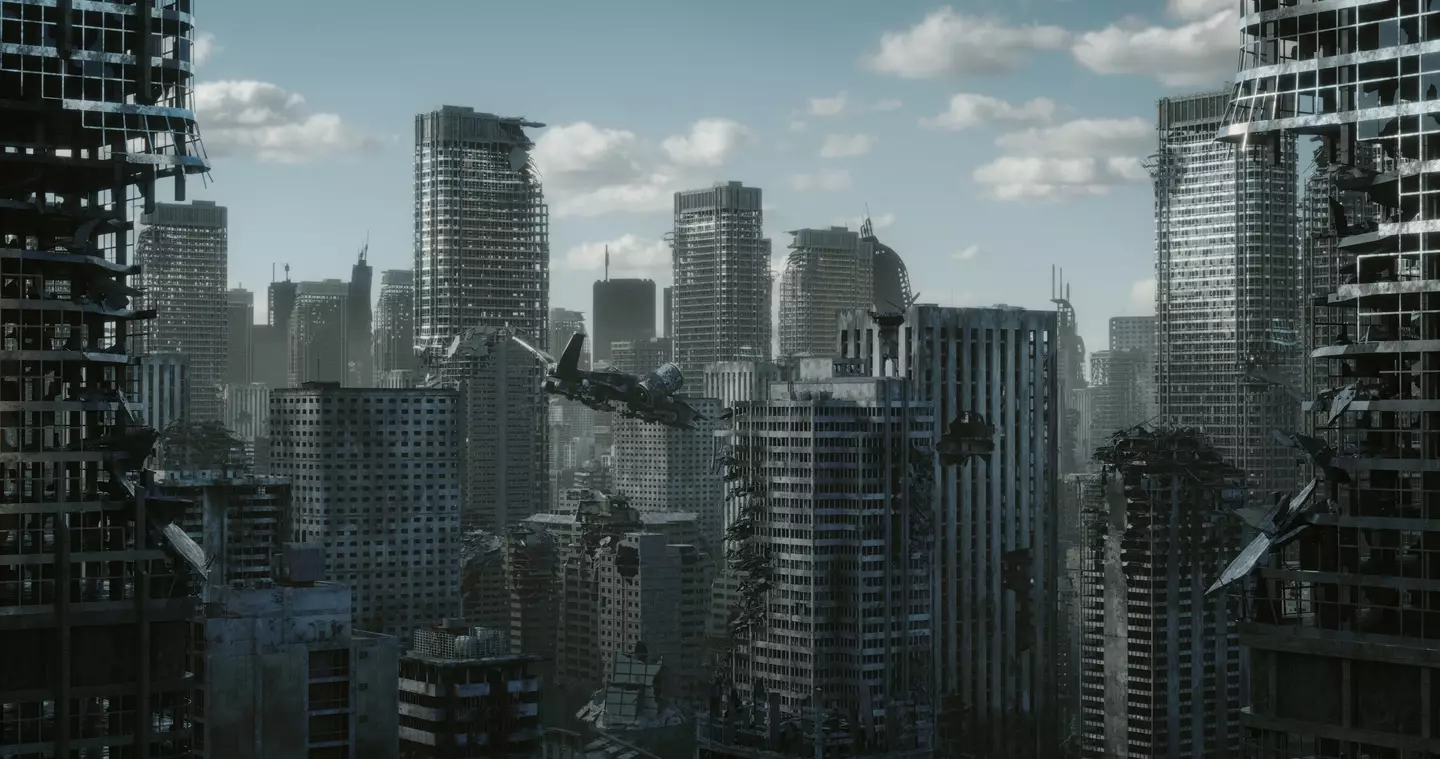

‘The weapons used would likely be far more advanced and destructive than those of any previous conflict.’ Bulgac / Getty
Hypersonic Missiles
These missiles travel at speeds five times the speed of sound (Mach 5), making them extremely difficult to intercept. Since they fly unpredictably at extreme speeds, existing missile defence systems would struggle to stop them.
Autonomous Weapons
With the rise of AI technology, fully autonomous combat systems are closer to reality than ever. AI-driven drones or robotic combat systems could be used for targeted strikes – perhaps even capable of dogfighting and strategic bombing, ChatGPT noted.
Space Weapons
These out-of-this-world weapons can target satellites, disrupting global communications, navigation, and surveillance systems, which are critical in modern warfare. For instance, Kinetic Bombardment (or ‘Rods from God’) are tungsten rods dropped from space that could hit targets with the force of a nuclear explosion.
Scarily, if all these weapons were deployed in a full-scale global war, the consequences on Earth would be beyond catastrophic and the fallout would seem beyond repair.
If anything, this shows why world leaders must do everything possible to prevent large-scale conflict and the misuse of these world-wiping technologies.
Featured Image Credit: RomoloTavani / Getty


AI has already demonstrated its capabilities to predict some pretty serious things, from medical diagnoses to the day you will leave Earth.
Some things are best left unknown, I think.
But what if you could catch a glimpse of the future to see how successful you will be? AI can pull through on this too.
Researchers in Denmark developed life2vec to help them explore patterns from deep-learning programmes, predicting a range of health and social ‘life events’.
The algorithm is similar to that of ChatGPT but instead of unverified sources, this analyses true life-impacting factors such as birth, education, and social benefits.
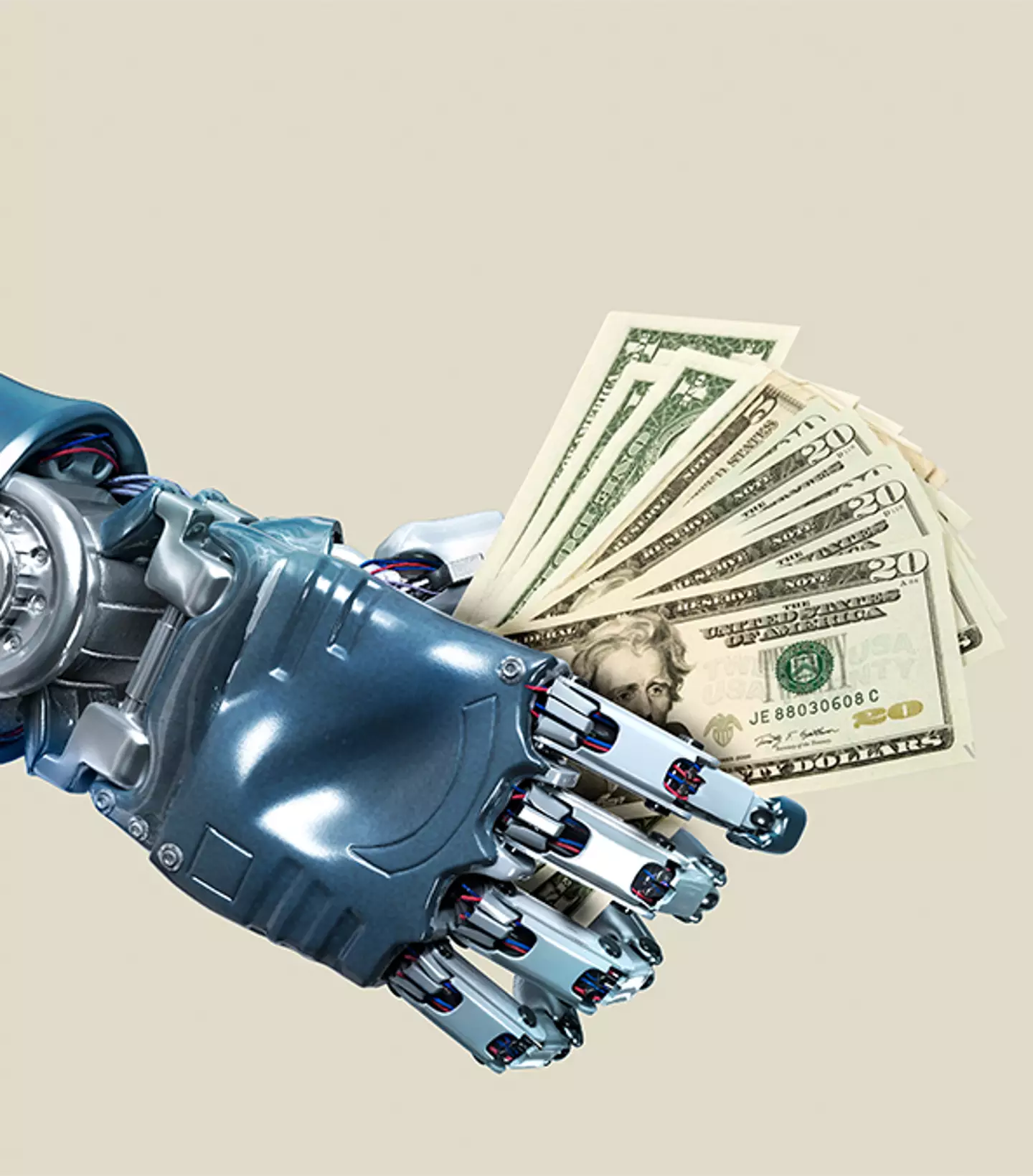

AI can predict people’s success in life / Paper Boat Creative / Getty
Using anonymised data from around six million Danes, collected by the Official Statistics Denmark agency, the AI program analysed sequences of events.
‘From one perspective, lives are simply sequences of events: People are born, visit the paediatrician, start school, move to a new location, get married, and so on.’ said Sune Lehmann, a professor at the Technical University of Denmark, and one of the study’s authors.
The results?
The algorithm predicts death with 78% accuracy.
On a much lighter note, when predicting if a person will move to another city or country, it is correct in 73% of cases.
‘It’s a very general framework for making predictions about human lives. It can predict anything where you have training data,’ Lehmann continued.
Overall, Lehmann sees big potential for the AI model, saying: ‘It could predict health outcomes. So it could predict fertility or obesity, or you could maybe predict who will get cancer or who doesn’t get cancer. But it could also predict if you’re going to make a lot of money.’
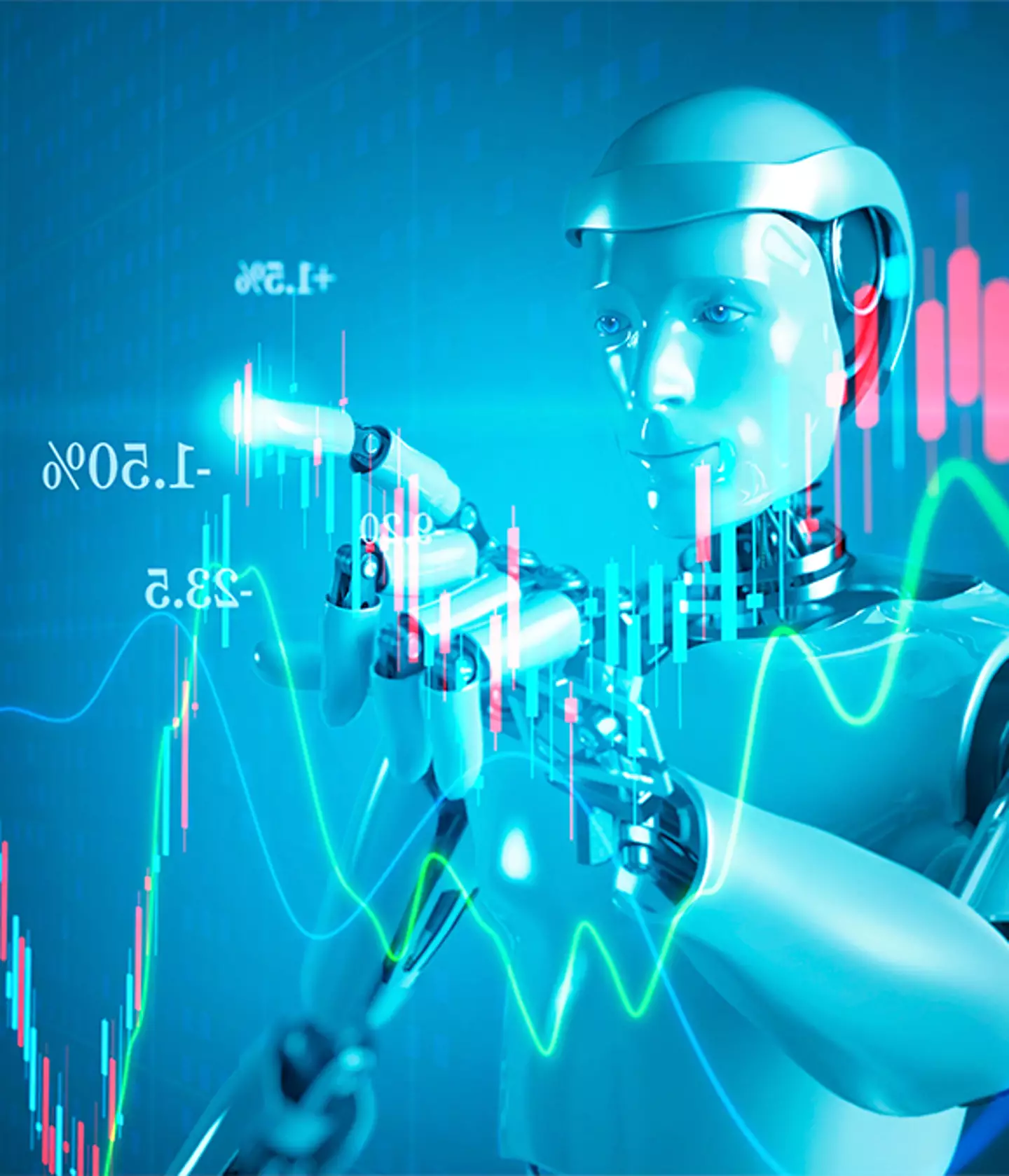

life2vec predicts death with 78% accuracy / Yuichiro Chino / Getty
While it might be tempting to use this tool to choose when to stay indoors or which job offer to accept, don’t rush.
The tool is strictly for private use with zero public access.
‘For now, it’s a research project where we’re exploring what’s possible and what’s not possible,’ Lehmann added.
However, false sites have been created on the back of this project advertising themselves as a ‘death calculator’, typically in exchange for personal information.
Pernille Tranberg, a Danish data ethics expert, pointed out that similar algorithms have been used by businesses such as insurance companies.
‘On the web, we’re already seeing prediction clocks, which show how old we’re going to get. Some of them aren’t at all reliable,’ Tranberg cautioned.
Featured Image Credit: Paper Boat Creative / Yuichiro Chino / Getty
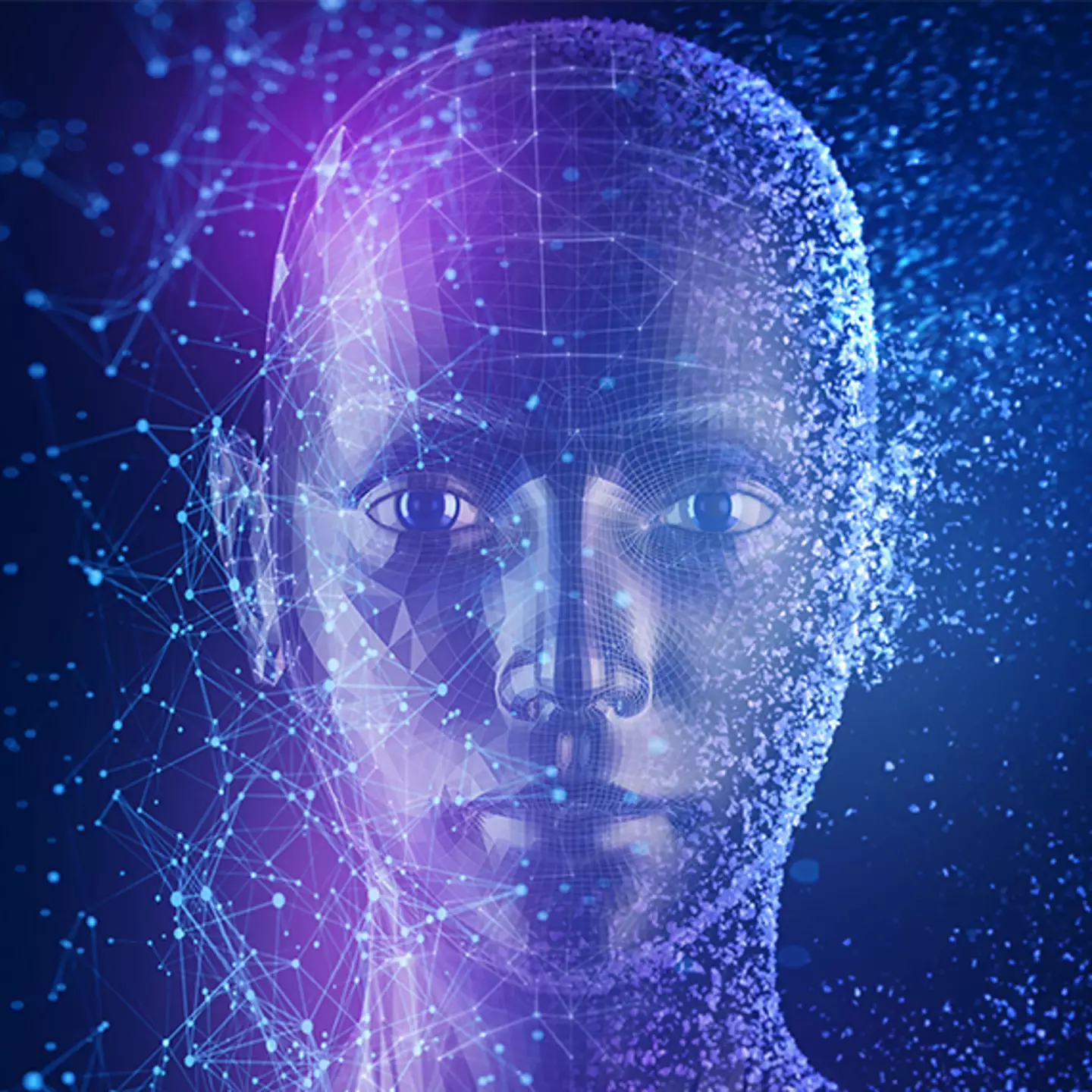

AI can make mundane tasks a whole lot easier – whether that’s writing emails or doing research for a school project.
But it can also be used for some far more momentous things – like a bunch of artificial intelligence (AI) startups that are using their specialized tech to recreate loved ones who have died.
Take Vocofy AI – a Chinese company that recreates the voices of people who are no longer able to speak.


Qi Yang / Getty
Professor Lee Tan, an associate dean of education at the engineering faculty of the Chinese University of Hong Kong, runs Vocofy AI.
According to Tech Times, he said he would normally refuse requests to recreate voices of dead people due to ethical issues, but was approached by a family that had lost their mom and was moved by their story.
They gave their permission for the recording of their mother’s voice to be used, and AI reportedly came together to let the daughters see and hear their late mother’s response to a letter they had written.
And this isn’t the only example of AI letting you ‘speak’ to people who have died.
Other startups include HereAfter AI – set up in 2019, it says it ‘guides your loved ones to audio record stories about their childhoods, relationships, experiences, personalities, and more’.
Essentially, the aim of HereAfter AI is to have you answer loads of questions before you pass away, banking hours of audio, which can then be listened to by those you leave behind.
The company StoryFile goes one step further, and captures people answering various questions on video before they die.
StoryFile says: ‘Imagine if you could video record yourself answering questions, so that future generations can talk to you – and you can talk back.’


Amanda Edwards / Contributor / Getty
StoryFile has some famous fans, too – actor William Shatner, best known for playing Captain James T. Kirk in the Star Trek franchise, is an ambassador for the AI company. He’s used it himself, and has answered nearly 600 questions on camera for StoryFile.
AI means StoryFile is designed to work like you’re having a conversation with your loved one – even if they’re no longer alive – rather than just watching a video of them.
As you can probably imagine, these types of companies are hugely dividing opinion. While some see it as a beautiful way to stay in touch with friends and family who are no longer alive, others argue that it’s dystopian and just a bit creepy.
Featured Image Credit: Qi Yang/Yuichiro Chino/Getty


We’ve all known it was coming – and now, AI has generated an entire romcom.
Chinese TV maker TCL has announced Next Stop Paris, a film it’s created using generative AI and professional voice actors, although the first trailer doesn’t exactly seem too convincing.
The film uses a mixture of text-to-video generator called Runway ML and popular image generator Midjourney.
It seems to tell the story of a couple meeting on their way to Paris, and then what looks like a fairly typical whirlwind of romance, swathed in sunsets.
However, the flaws that have plagued generative AI models so far are evident in the trailer – particularly the difficulty of making people look consistent.
From one shot to the next, the two main characters’ faces seem to morph and change, remaining stereotypically beautiful but definitely not the same.
It’s probably worth clarifying at this point, though, that despite the fanfare it’s trying to generate, the movie is likely to be the length of a TV episode, not a feature-length film.
Still, TCL Chief Content Officer Chris Regina told Tom’s Hardware: “It is a first for a trailer and for an entertainment company”, and argued that “there is tremendous curiosity around AI” which makes using it a “marketing differentiator”.
Now, terms like marketing differentiator might not exactly be the most interesting to viewers, but we can only presume there are executives out there whose ears prick up at the words.


TCLtvplus/YouTube
Still, Next Stop Paris isn’t exactly created by AI from top to bottom – it apparently has a human-written script and was voice-acted by humans, too.
Unsurprisingly, the trailer has been generating some strong reactions from people used to watching actual movies, too.
When it was posted on Reddit, for example, the top comment under the post read: “That is disgusting and no one should be supporting movies made by AI.”
That’s a strong stance, but another user echoed it, writing: “Wow. No, thanks. And what’s the point of making a fully AI-powered movie if it’s by definition going to be the most mediocre, average movie ever?”
The YouTube version of the trailer, meanwhile, has its comments section disabled – which doesn’t necessarily mean anything, but could indicate that TCL didn’t expect a unanimously positive reception for its work.
As with so much AI-generated content, this will probably end up in a middle ground. It’ll impress those who are interested in AI’s potential, while revolting those who think AI is a needless step that we’d be better off without.
Featured Image Credit: TCLtvplus/YouTube


It might be morbid, but at some point or other, we’ve all wondered what ‘hell’ might look like. A sea of flames? A creature with horns and a pointy tale? All valid suggestions.
Well, Historic Vids (@historyinmemes) on X recently posted a video on this topic which is generating a huge amount of chatter in the replies.
The video is captioned: “Asked AI to show ‘Hell’”. And the result is beyond freaky.
The black and white video shows an innumerable number of hands reaching up to grab a body that’s being pushed downwards.
The 18-second clip goes on to show a screaming face, followed by a distorted face continually being overlapped with hands. At one point it seems like a hand is coming out of the faces mouth. Enough to give you goosebumps.
People on X of course had some thoughts on the eerie AI video.
One person joked: “Many already experience this “Hell” every morning going to work by public transit.”
It’s not the first time AI has created some terrifying apocalyptic scenes either.
Academic Eliezer Yudkowsky recently predicted that the AI apocalypse might come sooner than you think.
He told The Guardian: “If you put me to a wall and forced me to put probabilities on things, I have a sense that our current remaining timeline looks more like five years than 50 years. Could be two years, could be 10”.
The California-based researcher famously, and sometimes to public criticism, speaks out against the rise of AI.
Scientists from Denmark have also created an AI system that hits even closer to home…
Trained off of the lives of more than one million people from Denmark, ‘life2vec’ is an AI system created to predict an individual’s time of death with alarming accuracy.
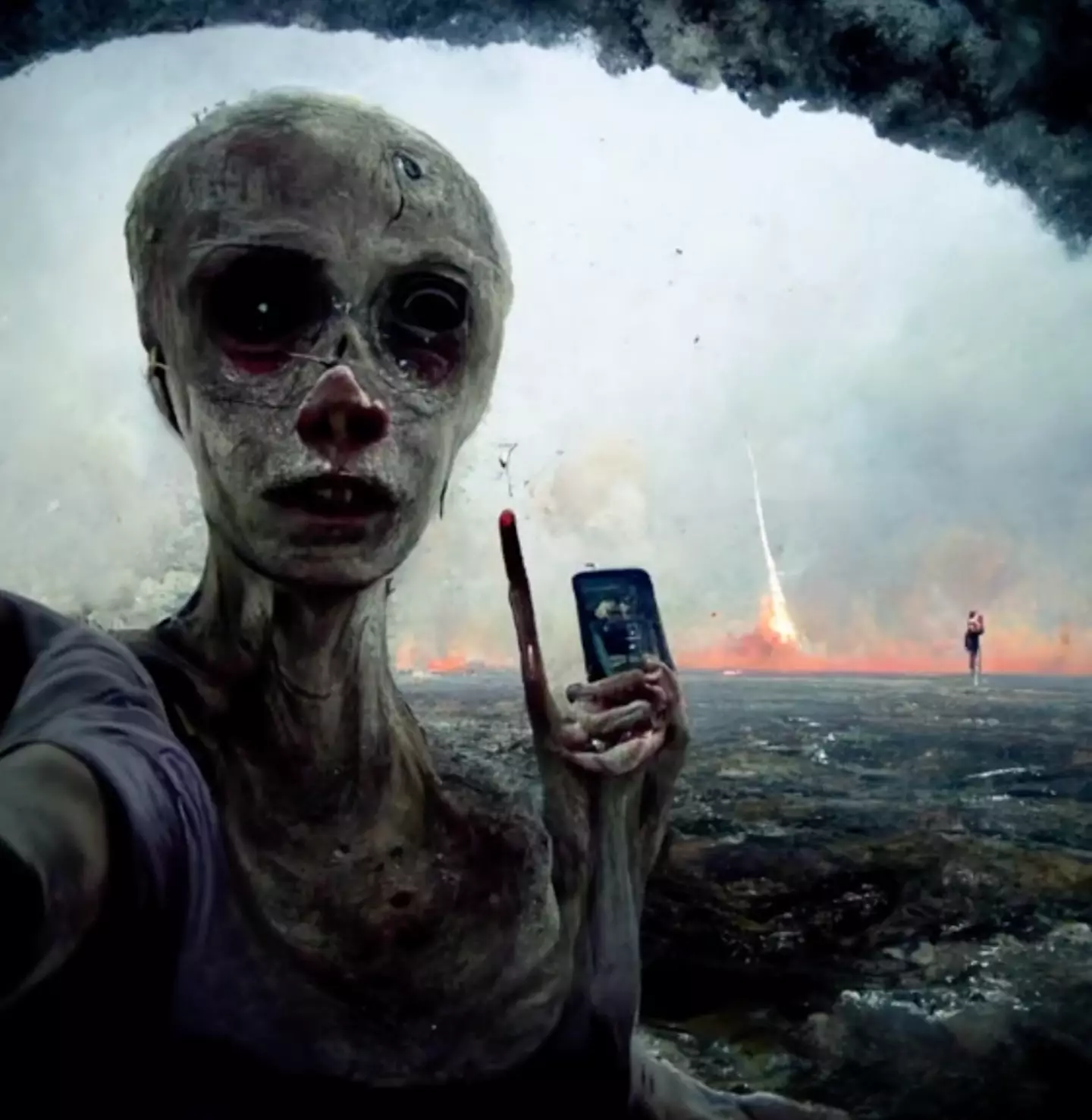

@robotoverloards/TikTok
Back to the apocalypse now, TikToker @robotoverloards previously asked AI to envision the ‘last selfies ever taken’. Demonstrating what people and our planet might look like seconds before our world ends.
The results were absolutely horrifying.
One picture shows a very grey background of swirling clouds atop a huge body of water. The person in the foreground is holding their phone in front of their face, which seems to be covered in blood from the nose down.
Other images from the same video show angry-looking flames amid water, and some of the ‘people’ in the foreground look skeletal.
One person noticed something particularly freaky about the video: “Yall saw how earth was in the sky like the moon?”
